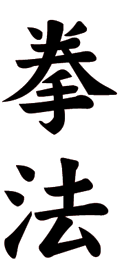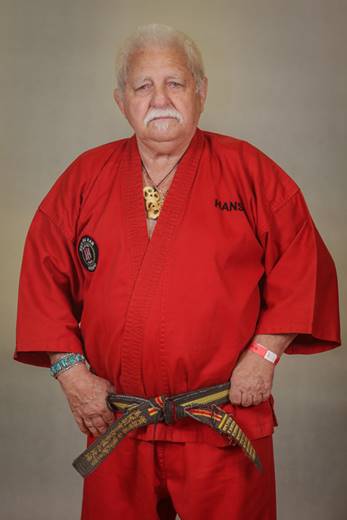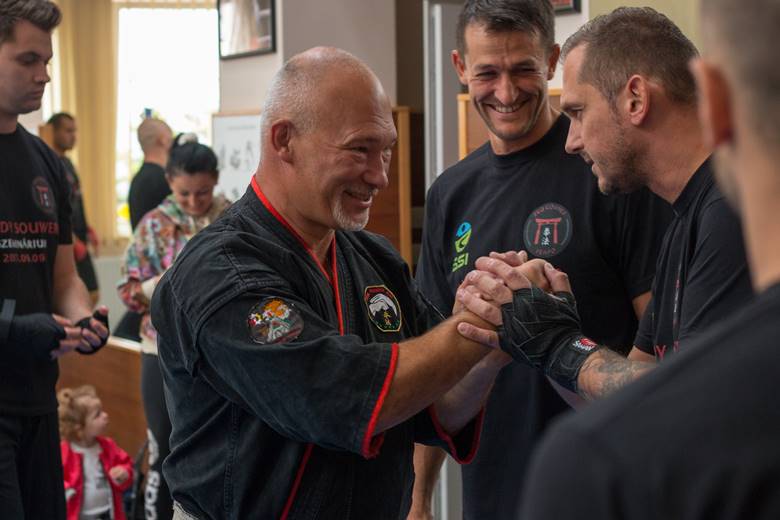History of Kempo
The Kempo a constantly evolving, highly effective martial arts style. It combines the techniques of Kung-fu, Ju Jitsu, Box, Judo and Karate. Its complex system includes form exercises, self-defence, just as stand-up and ground combat techniques. Strength, stamina, endurance, as well as pain tolerance are all part of Kempo’s practice, but all this should be combined with deep-seated respect first and foremost for the Style, the Masters and the fellow Students.
The beginnings in Hungary
We know the writings on the historical origins of Kempo but several other Karate styles have almost identical narratives that were sustained, therefore we can only present credibly the development of Kempo in Hungary which was founded by Dr Imre Hanshi Harnos.
In 1966, Dr Imre Harnos, who was then living in Australia, first came back to Hungary after 10 years but in those days, it was not possible to teach martial arts openly.
In April 1967, Dr Imre Harnos is expelled from Hungary because the teaching of Kempo is considered to be an anti-state act.
In 1969, Dr Harnos comes back to Hungary again and reorganises the remaining team, the training took place in the open, in the City Park but the authorities call for him to leave again.
From 1975 to 1976 Dr Harnos spent a relatively long time in Hungary and by this the first gym training in the Mélyépterv S.K. in Sütő street came true.
The first instructors
In 1981, Dr Harnos spent 8 months in Hungary and upon leaving, he gave Instructor (coach) dan degree to five people: Dr Mihály Szacsky, János Koncz, Dr Attila Borbély, János Bacsa, János Tamás Szegedi. All five of them were already qualified in different styles (Karate, Judo).
In 1982, for a time Kempo continued to live under the leadership of Dr Attila Borbély from whom learned a lot Ferenc Juhász and Rudolf Várszegi, then he returned to his former sport, to judo. The leadership of Kempo will thus remain with Rudolf Várszegi and Ferenc Juhász, who thanks to their persistent work, will initiate the further development of Kempo. This summer the first training camp was organized in Dombóvár under the management of Rudolf Várszegi.
The first Dan exam
In 1984, Dr Imre Harnos returns to home again and almost only by chance he finds the Kempo team with new students at a completely new location.
In 1985, the first Dan exam in Hungary took place where Rudolf Várszegi and Ferenc Juhász passed the Sho Dan exam. The two freshly qualified masters also obtained the examination right from the grandmaster, therefore from now on the popularisation and development could take place at a faster rate. Within the All Style Committee of the Hungarian Karate Association founded in 1982, the Kempo branch was also registered in 1985 under the leadership of Rudolf Várszegi. At the time of registration, there were already 4-5 clubs active in Hungary.
In 1988 Ferenc Juhász, with the help of Dr Harnos travels to Australia, where he takes the exam of Ni Dan degree at the grandmaster, then a week later he also takes the Sho Dan exam in Ju Jitsu as well in Canberra in front of the Australian Ju Jitsu Organisation’s Examination Committee. During his stay in Australia he helped to conduct two seminars for Dr Harnos.
Over time, the first Hungarian Kempo masters’ ways parted and we got to know Kempo, represented by Ferenc Juhász Master in the BVSC Karate gym, and we have been representing it ever since. In 2002, we lost our master due to an unfortunate motor accident.
Present
In 2004 we moved away from traditional Kempo for various reasons and in 2011 we “returned” to the former deputy of Ferenc Juhász, to Gábor Lovász Master and the Hungarian Kempo Association.
In 2015, there was a split in the life of the Hungarian Kempo Association and the HUN Kempo Kai Association was formed with the lead of Gábor Lovász Hanshi. We are still following the teachings of Gabor Lovasz 9. Dan Grandmaster’s teachings to this day and we trust that we can represent our beloved style in a way that is worthy of Hungarian Kempo’s past.
“Never forget where You came from and where You belong”.





